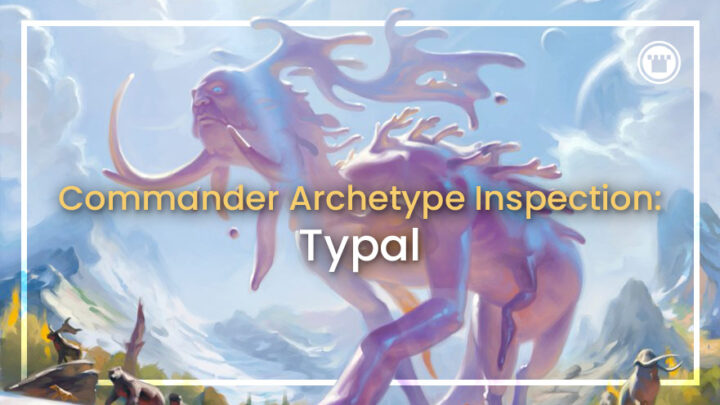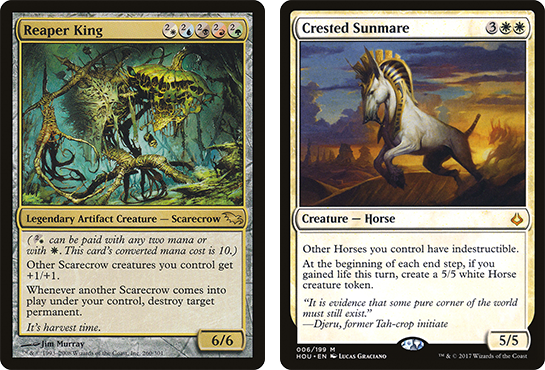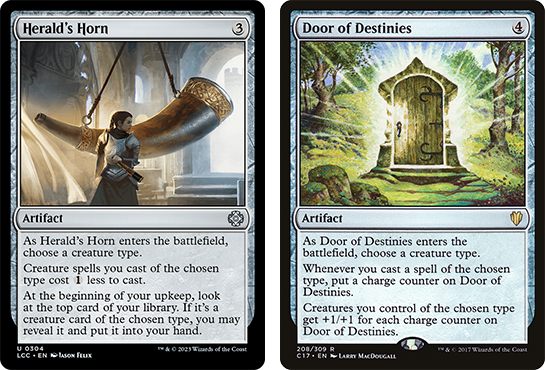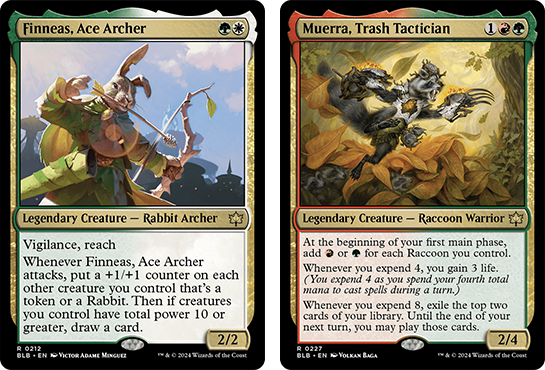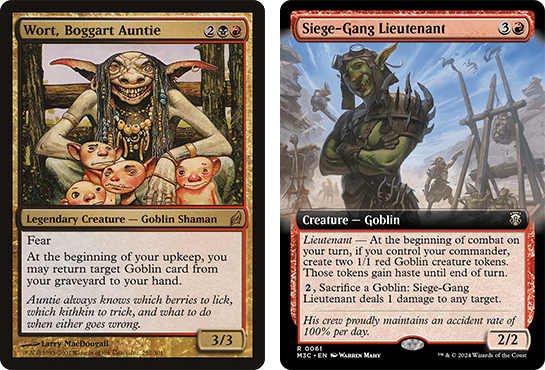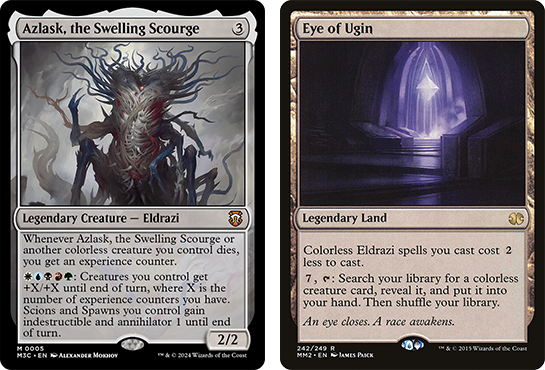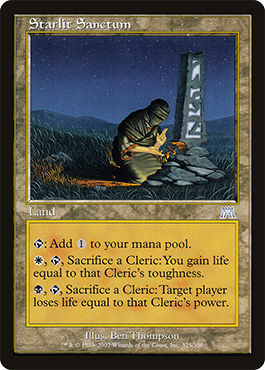Over the years, Magic has invented a multitude of mechanics to build decks around, each with its own unique advantages, dedicated support cards and memorable payoffs. But when all of those archetypes are thrown together into the grand melting pot of Commander, a few top-tier choices stand out. They offer versatile deck building options, consistent performance across different areas of the game and power ceilings which border on unbeatable.
To celebrate the release of Bloomburrow and its accompanying Commander decks, this week we’re examining one of the major themes of that cute and fuzzy plane: “typal” creature decks. These decks are built so that most or all of their creatures share the same type – so an all-elves deck, or all-squirrels, or all-ridiculously-adorable-floppy-rabbits-with-ridiculous-floppy-hats.
Typal mechanics have always been an iconic part of the Magic experience, going all the way back to Goblin King, Lord of Atlantis and Zombie Master in Limited Edition Alpha. It’s an archetype which can be easily understood and built even by novice players – you just look for the cards with your creature type on them! But that doesn’t mean typal decks are only for beginners, or that they all share the same straightforward gameplan. Let’s take a closer look at what has made typal decks such a powerhouse for so many years.
APES TOGETHER STRONG
Creature types are a highly unique build-around mechanic, from a design point of view. All creatures will have one or more types, which combined with the right typal support can massively transform their overall performance. But for a lot of those cards those creature types are treated like flavor text: totally irrelevant to its intended play pattern, and not considered by designers when calculating whether a card’s power justifies its mana cost.
I can guarantee you the creators of Alliances in 1997 did not consider potential Kibo synergies when designing Gorilla Shaman. Not because they weren’t time-travelers, but because the original printing lists the type as “Gorilla” and not “Ape”.
Look at it this way, and having the right creature types is like a hidden upgrade to your card; one you can use at no increased cost of mana or in-game resources. All you need to unlock this boost is a bit of focused deckbuilding – and by doing so, you’re unlocking it for most or all of the creatures in your deck!
That explains why typal decks are always among the strongest creature decks you can build for any format. Particularly in Commander, where the high bar set for aggro decks all but demands some kind of rapid multiplicative damage scaling, having all your creatures buff each other (for free!) is a true difference-maker.
While they might not achieve quite the same economy of scale as a generic Go Wide deck spamming the cheapest creature tokens it can find, the typal deck will have access to a much broader range of synergies and payoffs, particularly when it comes to permanent or reusable effects. Typal decks can leverage upgraded effects in almost every important category, just by making the necessary deckbuilding commitment: ramp, draw, recursion, tutoring, removal and defensive interaction, even better color fixing!
Of course, team-wide combat buffs are the signature of this archetype, easily stacking on each other until your homogenous army can kill the entire table in one combat step. But perhaps the most significant upside of a typal deck is all the other, non-typal parts of its cards. Because being a goblin or human or angel isn’t considered an impactful ability, your creatures can actually have all kinds of varied and useful abilities besides just being eligible for your buffs!.
THE TWO “TYPES” OF TYPAL
While there are some common traits all typal decks share – high creature count, “snowballing” boardstates, using combat as a wincon – I find it more useful to sort them into two groups.
The first group, the less-supported types, tend to follow a much more cookie-cutter deckbuild and gameplay strategy. Being limited to the generic or “any-type” support cards means only the unique abilities of the creatures included can set one such deck apart from the others.
Since less-supported types also tend to have fewer creatures in their card pool overall, they might have certain blind spots on their mana curve or list of key effects, and they probably cannot produce many on-type creature tokens to most efficiently benefit from team-wide buffs.
Coming up short in either area can harshly limit the power ceiling of a typal deck, which is why aficionados of these under-used creature types are always bullish about any new tech they spot during set previews. Just look at how quickly squirrel decks have come along since Modern Horizons 2 if you want a demonstration of how important these synergies are to a strong typal plan!
Meanwhile, up at the peak of the typal pyramid is a much more exclusive club: the proven evergreen typal decks. These are creature types which have been receiving their own dedicated support cards and strong on-type creatures for decades, and are all but guaranteed to keep getting those upgrades for as long as Magic is releasing sets.
There’s a significant hierarchy even within this group, but generally any type which can boast more than one of its own signature typal cards is closer to the elite than it is to the generic rabble.
While it can be fun to pick up an under-represented type – say, salamanders – and try to carry it to the top, I actually find these “elite” typal decks to be the most fun. Having their own unique support cards and synergies means that different elite types sport different playstyles than just buffing and attacking. Their deeper card pools makes choosing between creature options more of a substantial decision, and means you’re less likely to be running dull, vanilla creatures just to make up the numbers.
That’s why every new typal set – including Bloomburrow – is such a landmark event for Commander deckbuilding. Sure, there were enough cards before now for you to make a typal deck around lizards, or bats, or frogs, or even rabbits. But those decks weren’t honestly much fun to play: you didn’t have enough of your primary creature type, and those you did have weren’t supporting each other or making you feel rewarded for putting the spotlight on them.
But even one set of genuine typal support cards for these decks can form the crux which justifies all your other card choices – particularly if one of them is a strong typal-enabling commander!
TYPE-CASTING MY TYPE-SPELLS
I wanted to use the end of this article to inspect some of those “elite” types, and highlight how they each take the core strategy of typal decks in a different direction.
Elves
Plays like: Slivers, Elementals, Pirates
Elves are perhaps the most successful and powerful typal deck across Magic history, with a consistent presence in the metagame of tournament formats. In some ways their strategy is very much the “default” that most typal decks have followed, but the elves have so many more tools and tricks up their sleeve that they feel completely unique.
Starting with their unmatched selection of cheap mana dorks, a good elf deck is a machine for turning creatures into… more creatures. By using creatures to tap for mana, trigger draws and generate bonus tokens (also elves), the “elfball” can multiply in size at dizzying speeds. Once they’ve gone wide enough, teamwide pump effects or other finishers are easily searched up with green’s awesome creature tutoring. Delightfully simple and devastatingly consistent.
Goblins
Plays like: Zombies, Vampires, Phyrexians
Goblins are another of iconic type, famous for their quirky flavor and ubiquity across almost every Magic plane. Where the elves gather strength for a single overwhelming strike, goblins are chipping away at life totals early and often.
Blessed with interchangeable infinite combo pieces like Murderous Redcap, Putrid Goblin, Sling-Gang Lieutenant, Warren Soultrader, Grumgully. the Generous and Goblin Sharpshooter, goblin decks these days tend to be red-black or even red-green-black. With the powerful card selection from Goblin Recruiter, Goblin Matron, Goblin Ringleader, Boggart Harbinger, and Muxus, Goblin Grandee, this might be the one typal deck which can consistently pull “surprise” wins from any board state.
Merfolk
Plays like: Birds, Wizards, Spirits, Rogues
Merfolk decks have always set the template for how blue aggro decks look, let alone blue typal decks. Traditionally, they make up for weaker stats and a lack of ramp with a much stronger emphasis on disruptive interaction and evasive attacks, ending the game quickly behind a wall of counterspells.
That said, in the last few sets where merfolk have featured they have been slid over towards a UG color identity, which has opened up more elfball-like gameplay and resource access as well as a +1/+1 counter subtheme. Most interesting to me, though, are the many merfolk which can impact the game outside of combat using tap abilities or ETB triggers that are flashed in.
Eldrazi
Plays like: Angels, Dragons, Dinosaurs
Eldrazi aren’t always considered a typal deck, even if they look a lot like one based on the percentage of the deck that shares a creature type. That’s because the whole premise of typal decks includes a subtle bias towards low mana costs – the less you pay per creature, the better your deck is leveraging team-wide pump spells and “for each X you control” effects.
The average Eldrazi threat really doesn’t need much of a boost from typal support cards to end a game! But where they do need a lot of help is getting to the point of the game where those threats are castable – whether through ramp, or just putting on pressure and defending yourself with low-mana creatures. That’s what an Eldrazi typal deck is focused on – not so much enhancing the creatures you have in play as preparing the subsequent waves to crash home ASAP.
CALL TO THE KINDRED
If I had unlimited space to write these columns, I would probably just keep going with the previous section until I’ve addressed every significant creature type in Magic: The Gathering. I just find it fascinating that this archetype, which even my own younger self has criticized for simple and predictable gameplay, can simultaneously contain such multitudes of deck ideas and still present a different approach to each one!
The biggest contributors to this are the more interesting and distinctive support cards Wizards has been releasing in the past couple of years. I’ve always loved utility-focused typal decks like Birds, Clerics and Wizards, and now it feels like every type gets more cards in the vein of Keeper of the Nine Gales or Celestial Gatekeeper than it does Aven Brigadier.
Even when Wizards (the company) isn’t specifically working on a typal-themed product, they seem to be much more deliberate about what creature types they put on cards: we see far fewer incidental humans than we once did, a greater variety of types used in general, and some real efforts to gradually reinforce a core mechanical identity for even the most humble Brushwaggs and Pests of the world.
They’ve won me over from someone who nursed a bit of a grudge against this archetype to a player genuinely excited to see whether a rabbit, bat or mouse deck can be viable with Bloomburrow. It’s an amazing time to start building this archetype, and best of all it’s an easy build to get rolling on – so why not pick a favorite type (or default to one of those mentioned above), run a Card Kingdom search, and start tinkering!

Tom’s fate was sealed in 7th grade when his friend lent him a pile of commons to play Magic. He quickly picked up Boros and Orzhov decks in Ravnica block and has remained a staunch white magician ever since. A fan of all Constructed formats, he enjoys studying the history of the tournament meta. He specializes in midrange decks, especially Death & Taxes and Martyr Proc. One day, he swears he will win an MCQ with Evershrike. Ask him how at @AWanderingBard, or watch him stream Magic at twitch.tv/TheWanderingBard.

